Last updated on 2025-09-01
A review and sample photos using the M.ZUIKO DIGITAL ED 8mm F1.8 Fisheye PRO with the LUMIX GM5 and OLYMPUS E-P3.
- Please see the disclaimer regarding advertising here.
- Italicized links in the text are advertisement links that take you to other sites.
Table of contents
Gallery
The following cameras were used to take the sample photos:
- PANASONIC LUMIX GM5
- OLYMPUS E-P3
Review
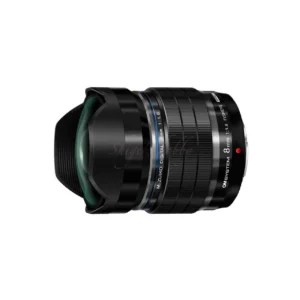
1.Overview
The M.ZUIKO DIGITAL ED 8mm F1.8 Fisheye PRO is a Micro Four Thirds standard fisheye lens with a focal length of 8mm.
Its main lens specifications are a lens configuration of 17 elements in 15 groups (1 aspherical lens, 3 Super ED lenses, 2 ED lenses, 1 Super HR lens, and 2 HR lenses), an aperture of F1.8-22, a lens length of 80mm, and a weight of 315g.
2.Usability
The M.ZUIKO DIGITAL ED 8mm F1.8 Fisheye PRO is notable for its extremely bright f/1.8 aperture, which is unusually fast for a fisheye lens. Its large maximum aperture of f/1.8 allows you to enjoy creating bokeh effects by adjusting the depth of field.
As a fisheye lens, the lens’s image quality is naturally blurred at the corners, but there is little distortion in the peripheral areas, truly living up to its name as a PRO lens.
The built-in hood prevents any eerie light from appearing when the sun is directly in front of the lens, but it can be seen when the sun is at an angle.
When using this lens with the OM-1 Mark II/OM-1, there is a fisheye correction function included in the shooting settings. See the link for details. This function allows a 16mm fisheye lens (35mm equivalent focal length) to be used as a wide-angle lens (35mm equivalent focal length) with 11mm, 14mm, or 18mm focal lengths. When the Raw+JPG mode is selected, an uncorrected Raw image and a corrected JPG image will be recorded.
Furthermore, when attaching this lens to an Olympus camera and shooting with the Raw image ORF, the same correction can be made using the Fisheye correction function in OM WORKSPACE, which is provided free of charge by OM SYSTEM.
The correction results are shown below; the image on the left is a fisheye image, and the image on the right has undergone wide-angle correction.
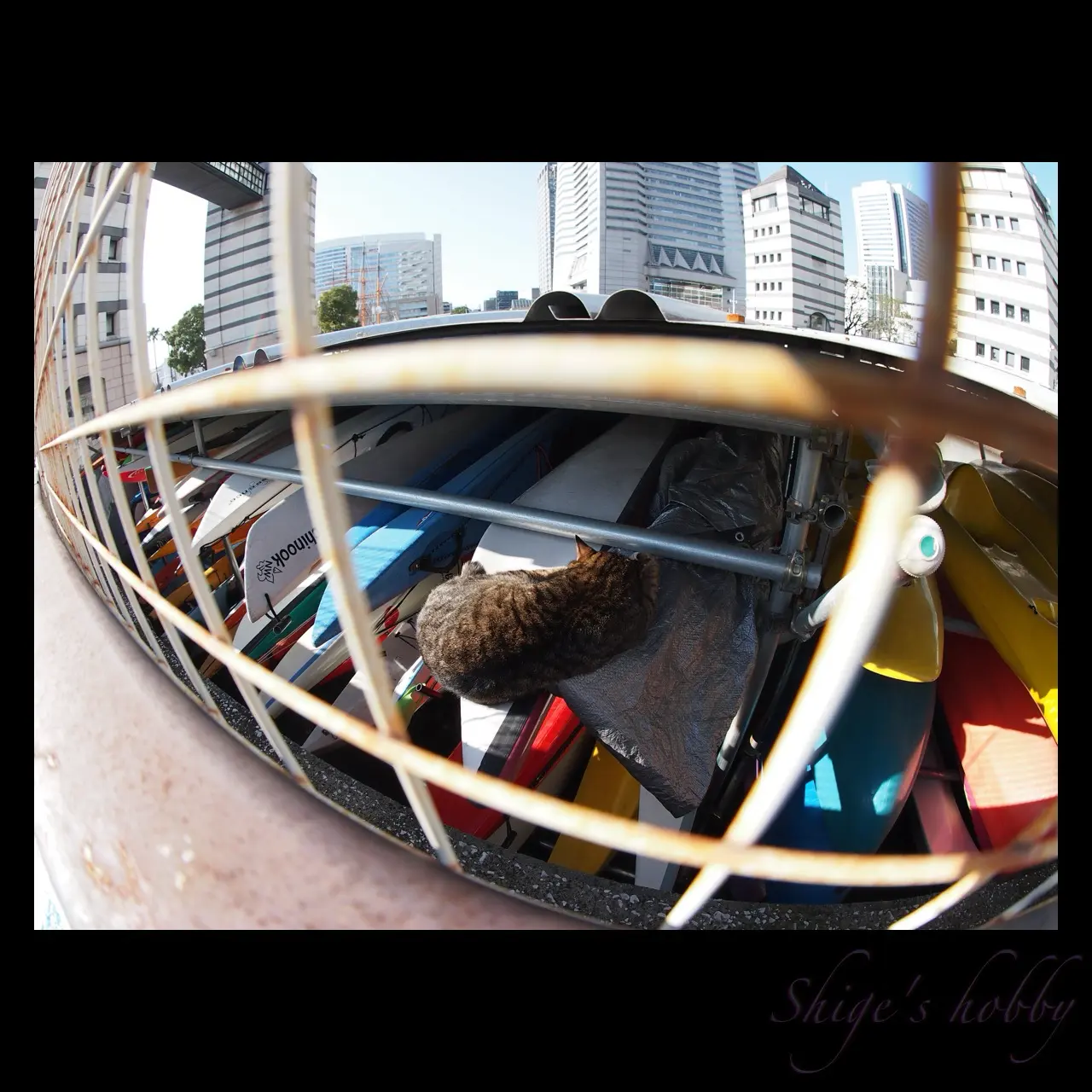

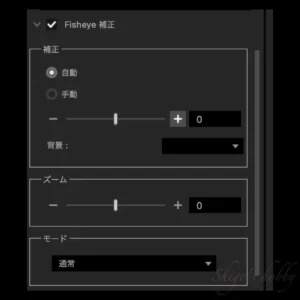
OM WORKSPACEのFISH EYE補正メニューは以下のとおりだ。
- correction
- “-” drum-shaped emphasis (left)
- “+” barrel-shaped emphasis (right)


- Zoom
- “-” Zoom in (enlarge) (left image below)
- “+” Zoom out (reduce) (right image below)
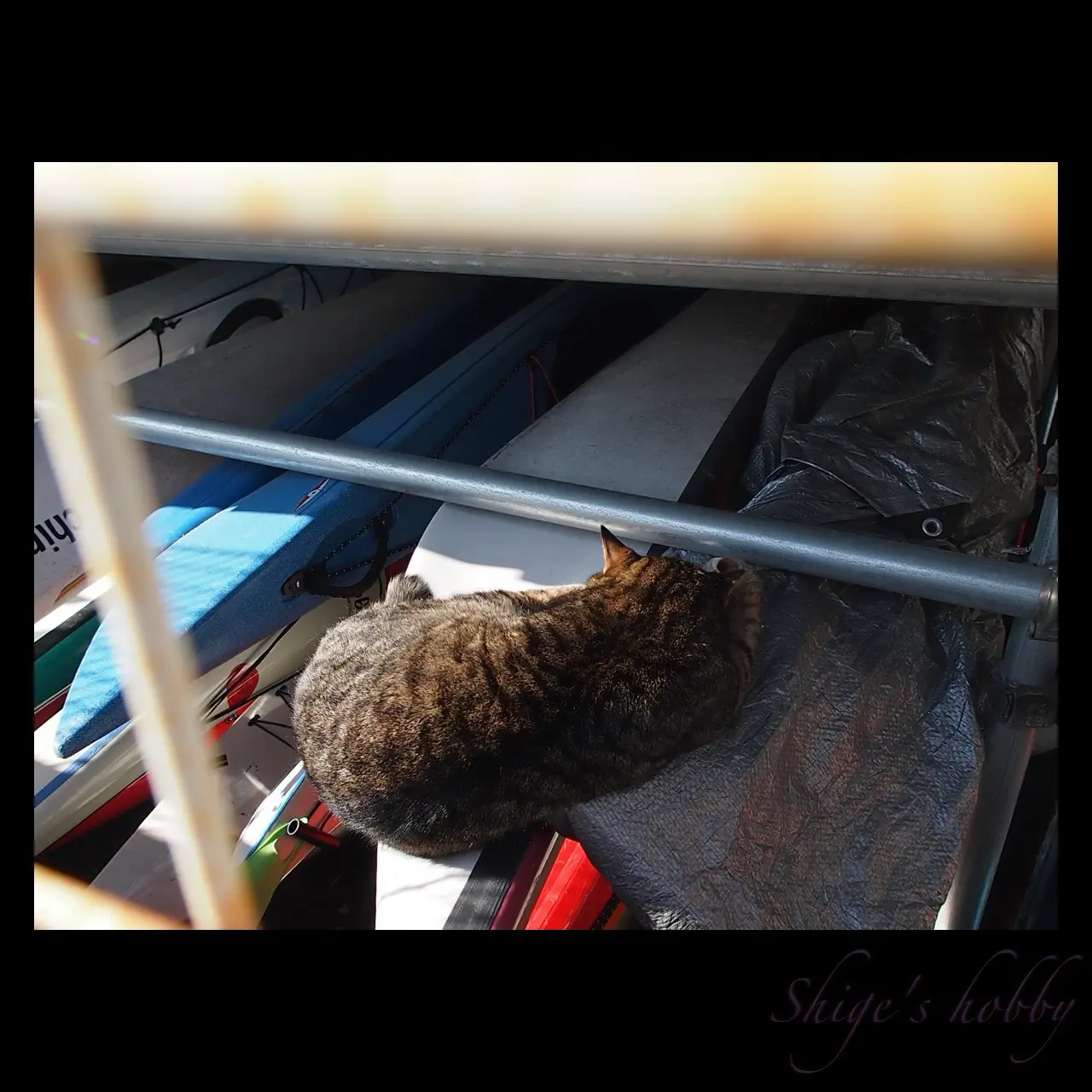
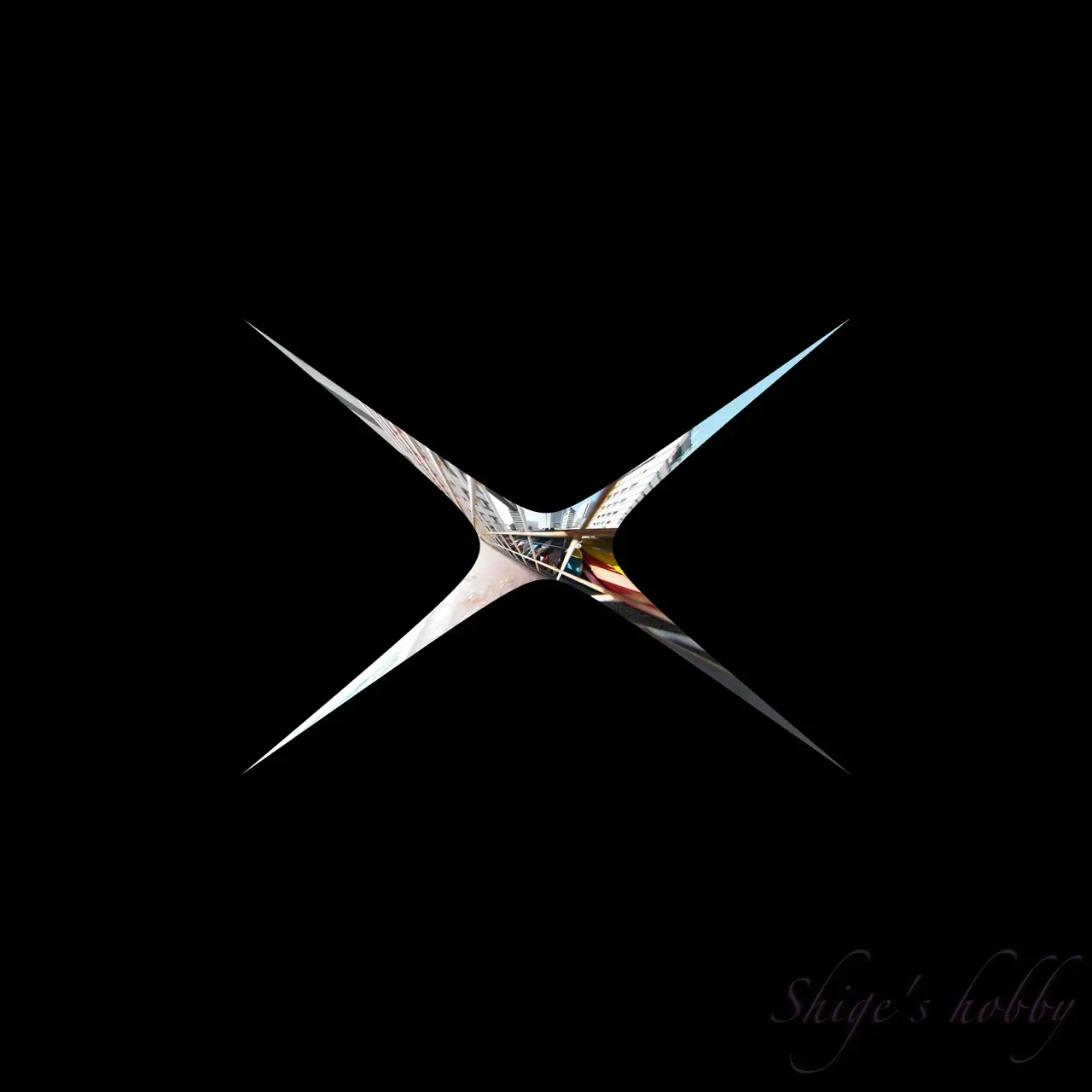
- Mode (Olympus has been focusing on underwater photography, so this menu is likely to be included)
- usually
- underwater
What is interesting here is the difference from simple distortion conversion. I compared it with an image converted using Affinity Photo’s conversion function, and it turns out that the image converted using the dedicated profile has less distortion and has been converted successfully.


Unfortunately, even if the lens is the M.ZUIKO DIGITAL ED 8mm F1.8 Fisheye PRO , the raw image recording format is different when recorded with a Panasonic body, so fisheye correction cannot be performed in OM WORKSPACE. While this is unavoidable since the camera manufacturers are different, I wonder if there’s any way to work together on this issue as an alliance?
I bought this lens when I went to Penang, Malaysia, and used it for five days. The country has very strong sunlight during the day, so it was probably the perfect place to test the reliability of the lens and camera.
I eventually got bored of using only the fisheye lens for five days, so I stopped using it for a while after that.
The lens’s list price is 150,000 yen, but used ones can be found for about half that price.
3.Summary
In conclusion, to sum up the M.ZUIKO DIGITAL ED 8mm F1.8 Fisheye PRO is a fisheye lens with a bright maximum aperture, and it offers a new way to enjoy fisheye lenses by taking advantage of the brightness to create bokeh effects. Although it is only available on Olympus cameras, it can convert images into ones that look like they were taken with a regular wide-angle lens, allowing for a wider range of expression than simply using a fisheye lens.
Specifications, considerations, etc.
For Micro Four Thirds cameras, there are two dedicated fisheye lenses: the LUMIX G FISHEYE 8mm/F3.5 and the simple Fisheye Body Cap Lens BCL-0980.
The LUMIX G FISHEYE 8mm/F3.5 has an aperture value of f/3.5, which is as bright as a typical fisheye lens, and even at full aperture you can’t expect much bokeh. If you’re considering this lens new, the Fisheye Body Cap Lens BCL-0980 may also be sufficient. Used prices for the LUMIX G FISHEYE 8mm/F3.5 have dropped, and at less than half the price of the M.ZUIKO DIGITAL ED 8mm F1.8 Fisheye PRO and about three times the price of the Fisheye Body Cap Lens BCL-0980, it still has autofocus and aperture adjustment, making it a viable option.
| lens name | M.ZUIKO DIGITAL ED 8mm F1.8 Fisheye PRO | LUMIX G FISHEYE 8mm / F3.5 | Fisheye Body Cap Lens |
| Focal length(mm) | 8 | 8 | 9 |
| 35mm equivalent focal length (mm) | 16 | 16 | 18 |
| Max aperture | 1.8 | 3.5 | 8 |
| Min aperture | 22 | 22 | 8 |
| Leaf blade | 7 Circular aperture | 7 Circular iris diaphragm | 1 Circular fixed aperture |
| Lens Construction | 17 elements in 15 groups (1 aspherical lens, 3 Super ED lenses, 2 ED lenses, 1 Super HR lens, 2 HR lenses) | 10 elements in 9 groups (1 ED lens) | 5 elements in 4groups (2 aspherical lenses) |
| Min distance(m) | 0.12 | 0.1m | 0.2 |
| Lens length(mm) | 80 | 51.7 | 12.8 |
| Max diameter(mm) | 62 | 60.7 | 56 |
| Filter Size(mm) | none | Rear: Clamp type: 22mm x 22mm | none |
| Weight(g)(lens only) | 315 | 約165g | 30g |
| Release date | M43 | M43 | M43 |
| Edition Number | June 26, 2015 | June 30, 2010 | February 28, 2014 |
| Price(Yen/No-tax) | 144,000 | 95,000 | 12,000 |
Reference links
- M.ZUIKO DIGITAL ED 8mm F1.8 Fisheye PRO・OM SYSTEM official page
- OM SYSTEM FAQ Fisheye補正機能・OM SYSTEM official page
- LUMIX G FISHEYE 8mm / F3.5・PANASONIC official page
- BCL0980・OM SYSTEM official page
- LUMIX GM5・Shige’s hobby
- “OM SYSTEM M.ZUIKO DIGITAL PRO Lens Selection Guide: Explaining the Features and Uses of All Lenses in the Current Lineup” Part 2: Wide-Angle Focal Length Lenses・Kitamura Camera official page
Affiliate links

Update history
- 2025.8.31

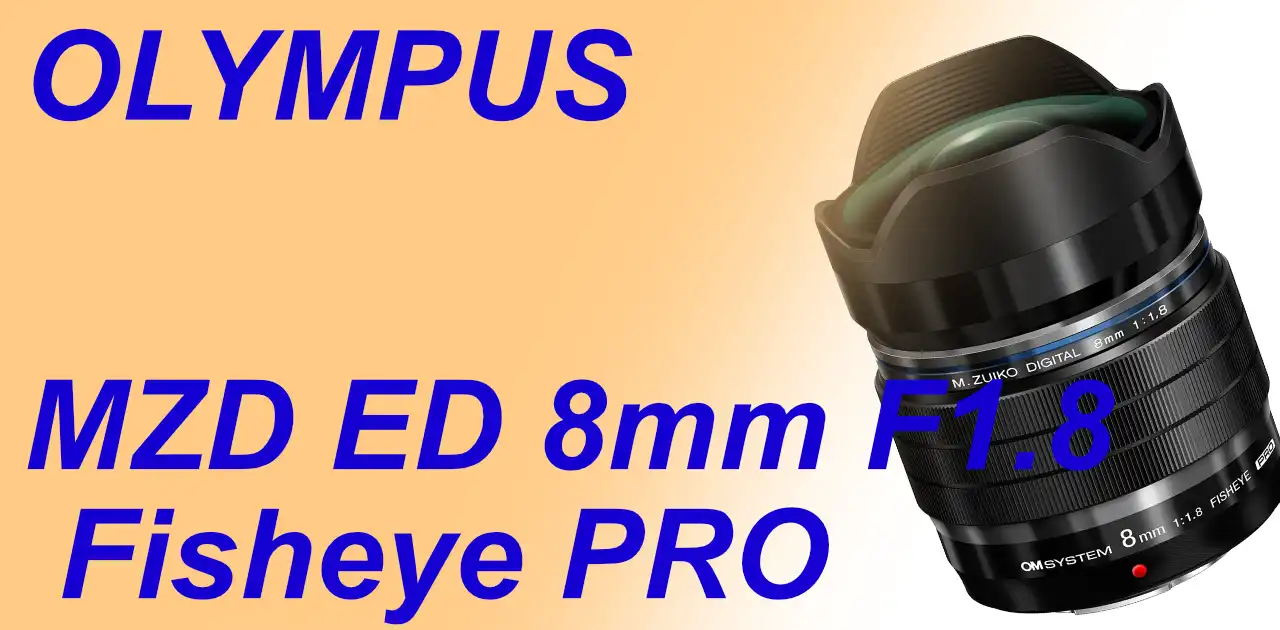

Be First to Comment